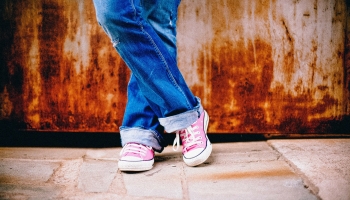Reading Time: 4 minutes
Inhalants are a difficult drug to talk about because so many, different household items can be inhaled as a way to get high. It isn’t just about sniffing glue.
Given the availability of inhalants and the relative silence regarding inhalant use, it is not surprise that many teenagers experiment with them. However, many people don’t realize that inhaling fumes to get high, even once, can be harmful to the brain and body and can lead to death. In truth, the chemicals being used to get high can change the way the brain works and cause other bodily problems.
But, what are inhalants? What could your teen be using to get high?
Inhalants

Many teens experiment with inhalants due to their accessibility.
It is true that many drugs can be inhaled, but the term inhalants only applies to those substances that are rarely, if ever, taken in any other way than inhaling. These substances take many forms, but the one clear trait that they all have is that they have psychoactive (mind-altering) properties when inhaled.
Many people have a hard time thinking of inhalants as drugs because the items used tend to be everyday items whose purpose has nothing to do with getting high.
The National Institute on Drug Abuse identifies the following products as inhalants:
Volatile solvents—liquids that vaporize at room temperature
- Industrial or household products, including paint thinners or removers, degreasers, dry-cleaning fluids, gasoline, and lighter fluid
- Art or office supply solvents, including correction fluids, felt-tip marker fluid, electronic contact cleaners, and glue
Aerosols—sprays that contain propellants and solvents
- Household aerosol propellants in items such as spray paints, hair or deodorant sprays, fabric protector sprays, aerosol computer cleaning products, and vegetable oil sprays
Gases—found in household or commercial products and used as medical anesthetics
- Household or commercial products, including butane lighters and propane tanks, whipped cream aerosols or dispensers (whippets), and refrigerant gases
- Medical anesthetics, such as ether, chloroform, halothane, and nitrous oxide (“laughing gas”)
Nitrites—used primarily as sexual enhancers
- Organic nitrites are volatiles that include cyclohexyl, butyl, and amyl nitrites, commonly known as “poppers.” Amyl nitrite is still used in certain diagnostic medical procedures. When marketed for illicit use, organic nitrites are often sold in small brown bottles labeled as “video head cleaner,” “room odorizer,” “leather cleaner,” or “liquid aroma.”
According to the National Institute on Drug Abuse:
- New users ages 12–15 most commonly abuse glue, shoe polish, spray paints, gasoline, and lighter fluid.
- New users ages 16–17 most commonly abuse nitrous oxide or “whippets.”
- Adults most commonly abuse a class of inhalants known as nitrites (such as amyl nitrites or “poppers”).
Signs of Use
Before you decide what to do, it is important to determine whether or not your child is using inhalants. Obviously, if your child is in possession of one of the products labelled a possible inhalant and they have no reason for possessing it, that is a sign they could be using it to get high. But, that alone isn’t necessarily conclusive.
Other signs to look for include:
- Slurred or disoriented speech
- Spots and/or sores that circle the mouth
- Red and watery eyes and a drippy nose
- A chemical smell that lingers on their breath
- Appearing intoxicated and/or stumbling
- Nausea and/or loss of appetite
Chronic inhalant abusers may exhibit such symptoms as anxiety, excitability, irritability, or restlessness
In addition, The United States Consumer Product Safety Commission identifies the following warning behaviors:
- Sitting with a pen or marker near nose
- Constantly smelling clothing sleeves
- Showing paint or stain marks on the face, fingers, or clothing
- Hiding rags, clothes, or empty containers of the potentially abused products in closets and other places
Demographics
You may have noticed some markers of inhalant use, but you may still be telling yourself that your teen couldn’t be getting high on inhalants. However, teens are the group most likely to use inhalants because the drugs are legal and inexpensive.
The Monitoring the Future Study, which charts trends in the prevalence (commonness) of various drugs, reports:
- 9.40 percent of 8th graders report using inhalants in their lifetime
- 7.20 percent of 10th graders report using inhalants in their lifetime
- 5.70 percent of 12th graders report using inhalants in their lifetime
This means that one in ten children in the 8th grade have tried inhalants on at least one occasion. Your teen could be one of them.
